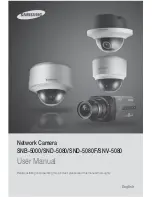
990 CLD Autoline™ Leak Detector
DR
AFT 2/2/04
4-19
7. Check that the valves are properly oriented and actuating when commanded.
❑
Press the RANGE button marked DOWN to display the smallest leaks.
❑
If necessary, use the ZERO and COARSE ZERO knobs to lower the LEAK RATE
display near
0
with ten rise, fall, and rise again. At each peak reading, close the
valve on the calibrated leak to determine which peak is helium.
❑
If the helium peak occurs near
0
, replace the spectrometer tube or have the
magnet recharged or reassembled correctly.
❑
If the helium peak occurs near
10
, replace the spectrometer tube or have it
cleaned.
❑
If no peak occurs, but the display rises or falls slowly, measure the ion source
voltages, as listed next, to diagnose a shorted ion source.
8. Turn the ION dial to 4.00 and measure the voltages between TP4 (ground) and TP1,
TP2, and TP3 in succession.
NOTE
Note: All of the above voltages are +10%.
❑
If all voltages are more than 10 percent low, or two of them are equal, disconnect the
ion source cable while measuring the ION voltage (TP1). If the voltage changes more
than 1.0 V, replace the ion source or the entire spectrometer tube the ion source may
be shorted.
❑
If no change occurs and the voltage remains more than 10 percent low, replace the
990 Controller to determine if the controller or its cable is defective. If replacing the
controller does not solve the voltage problem, refer to
Shorted Controller Cable
listed
under 6“Fundamentals of Leak Detection” on page 6-1.
9. Verify that the ground slit plate has ben properly positioned, the ion source is correctly
aligned, and that the magnet pole piece inserts are fully inserted and secured in place
with set screws.
Indicators should read as follows:
ION voltage (TP1)
+250 VDC
REPELLER voltage (TP2)
+350 VDC with BACKGROUND switch set at RUN
+250 VDC with BACKGROUND switch set at CHECK
FOCUS voltage (TP3)
+ 170 to +230 VDC
Artisan Technology Group - Quality Instrumentation ... Guaranteed | (888) 88-SOURCE | www.artisantg.com
















































